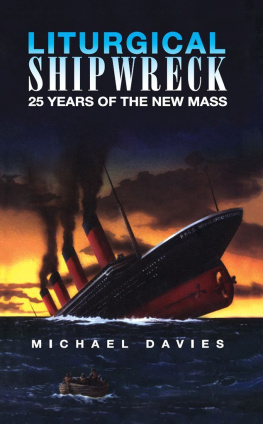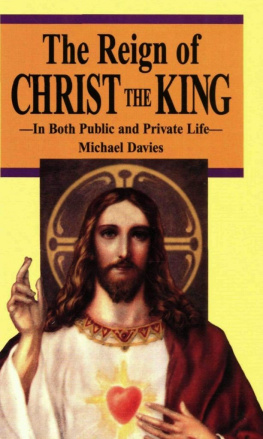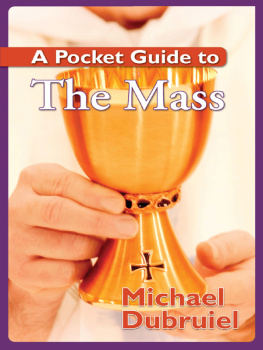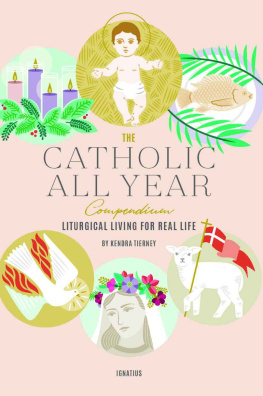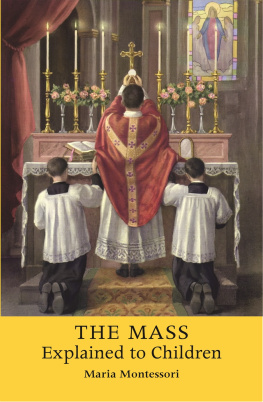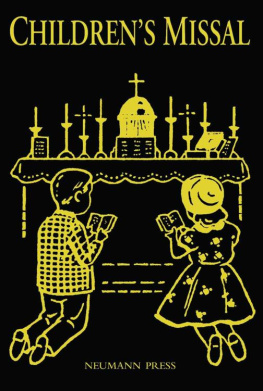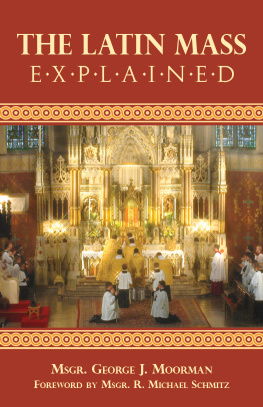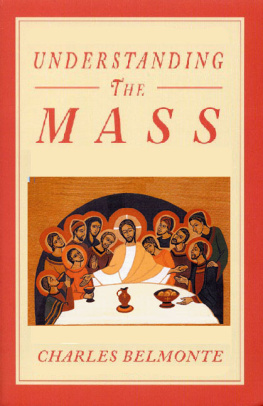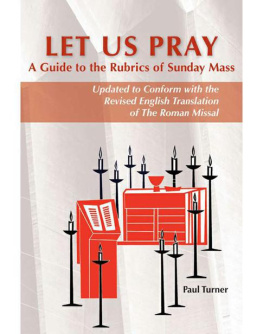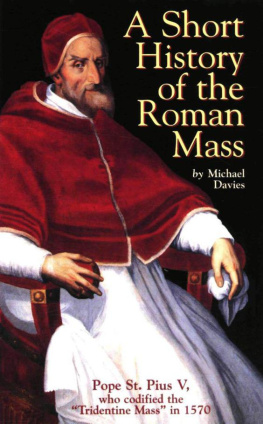Liturgical
Shipwreck
25 Years of The New
Mass
1969-1994
Michael Davies
Copyright 2011, Michael Davies
LITURGICAL SHIPWRECK
The liturgical reform, welcomed with so much idealism and hope by so many priests and lay people alike, has turned out to be a liturgical destruction of startling proportionsa debacle worsening with each passing year. Instead of the hoped-for renewal of the Church and of Catholic life, we are now witnessing a dismantling of the traditional values and piety on which our faith rests. Instead of the fruitful renewal of the liturgy, what we see is a destruction of the forms of the Mass which had developed organically during the course of many centuries.
Msgr. Klaus Gamber
(Quoted on page 31)
CONTENTS
Rather, I intend to prove that, as already mentioned, the very composition of a New Order of the Mass is a break with tradition, that the changes made in the Traditional Mass of the Roman Rite since Vatican Council II go far beyond what that Council authorized and, in some cases, actually contradict what it mandated. I propose to show that we have been the witnesses of a revolution, rather than a reform, and that the revolution of Pope Paul VI has produced no good fruits to compensate for its destruction of our almost 2,000-year-old liturgical inheritance.
Before discussing this revolution, it is necessary to be clear as to what is meant by a rite of Mass. A rite of Mass consists of the words and ceremonies surrounding the essential elements that were instituted by Our Lord. These essential elements are 1) the matter: bread and wine; 2) the form: This is My Body and This is the Chalice of My Blood...; and 3) a validly ordained priest who 4) intends to do what the Church does in confecting this Sacrament. There are many rites of Mass (basically 9; but as high as 23, if derivatives are counted) in the East and West recognized as valid by the Catholic Church, including all those used by the schismatic Orthodox Churches. The same Sacrifice of Calvary is made present in all these rites, and the same sacramental grace is obtained through them. Christ Himself is received in Holy Communion. He cannot be received any more or any less perfectly in any particular rite, and the grace received in Holy Communion is greater or lesser according to the devotion and dispositions of the communicant.
Before discussing the liturgical revolution, it is necessary to say a few words about whether a loyal Catholic can, in fact, criticize any teaching or legislation emanating from the Holy See and still claim to be loyal. At the time of Humanae Vitae (the encyclical condemning artificial birth control), Modernist theologians coined the term loyal dissent. They claimed that it was possible to dissent from papal teaching on faith and morals and to remain a loyal Catholic. Such a claim is nonsensical. There can never be a right to dissent from the teaching of the Magisterium on a matter of faith or morals. The Modernist concept of loyal dissent in respect to doctrine can in no way be compared with the right of a faithful Catholic to express disagreement with a strictly prudential decision of the Pope. This distinction can be made clear by quoting one of the most loyal and most erudite Catholics of this century, Professor Dietrich von Hildebrand, who was described by Pope Pius XII as the 20th-century Doctor of the Church and who was honored by Pope Paul VI for his fidelity to the Holy See. In a book whose title expresses perfectly the state of the Church in the West since Vatican II, The Devastated Vineyard, a book which every Catholic who loves the Church should own, Professor von Hildebrand reminds us that, although we must accept everything promulgated ex cathedra by the Pope as absolutely true,
In the case of practical, as distinguished from theoretical authority, which refers, of course, to the ordinances of the Pope, the protection of
It is thus evident that a loyal Catholic has the right to express sincerely held reservations concerning certain aspects of the New Missal. Even the most cursory reading of the conciliar Constitution On the Sacred Liturgy makes it clear that the reform which it authorized was to be based on pastoral considerations. In his Apostolic Letter Vicesimus Quintus Annus of December 4, 1988, commemorating the 25th anniversary of the Liturgy Constitution, Pope John Paul II explained, quoting the Liturgy Constitution itself, that these pastoral considerations were: To impart an ever increasing vigor to the Christian life of the faithful; to adapt more suitably to the needs of our own times those institutions which are subject to change; to foster whatever can promote union among all who believe in Christ; to strengthen whatever can help to call the whole of humanity into the household of the Church. The reform was intended to clarify the nature of the Mass for the faithful and to enhance the quality of their participation.
If members of the faithful are convinced in all sincerity that the New Rite obscures rather than clarifies the sacrificial ethos of the Mass and makes their participation each Sunday an act of heroic obedience, rather than joyful participation, they are entitled to express their misgivings to the universal Father in Rome and to beg him to give them bread rather than stones. It might well be objected that the laity do not possess the knowledge or competence to justify their criticizing a sacramental rite approved by the Pope. There would be some weight to this argument if it transpired that the only critics of the New Mass were laymen. But it has been denounced in the most radical manner possible by an ecclesiastic whose authority in matters of doctrine was second only to that of the Pope himself. I refer, of course, to the former Prefect of the Congregation for the Doctrine of the Faith, Cardinal Ottaviani. In September 1969, A Critical Study of the New Order of Mass, prepared by a group of Roman Theologians, was presented to Pope Paul VI. The Study itself is of less significance than the letter which accompanied it, which had been written by Cardinal Ottaviani, and was signed by him and by Cardinal Bacci. At least a dozen other Cardinals had agreed to sign, but experienced a last minute failure of nerve.their duty in the sight of God and towards the Pope to make their misgivings known. They reminded the Pope that: The subjects for whose benefit a law is passed have always hadmore than the rightthe duty, if it should instead prove harmful, of asking the legislator with filial trust for its abrogation. This is precisely the point made by Dietrich von Hildebrand which was quoted above: The faithful are not obliged to regard all ordinances as good and desirable. They can regret them and pray that they be taken back; indeed, they can work, with all due respect for the Pope, for their elimination. The historic judgment of the Cardinals was that:
The Novus Ordo Missaeconsidering the new elements susceptible of widely differing evaluations, which appear to be implied or taken for grantedrepresents, as a whole and in detail, a striking departure from the Catholic theology of the Mass which was formulated by Session XXII of the Council of Trent, which by fixing definitively the canons of the rite, erected an insurmountable barrier against any heresy which might attack the integrity of the Mystery.
The year 1994 also marks the 25th anniversary of this courageous declaration, which was dated September 3, 1969, the Feast of St. Pius X. The very Catholic motto of Cardinal Ottaviani was Semper IdemAlways the same. The Conciliar Church is possessed by a frenzied desire for change, and any change, it would seem, is perceived as a change for the better.
Next page
